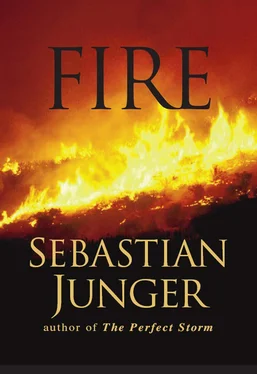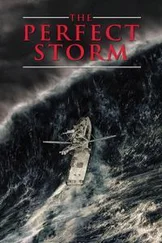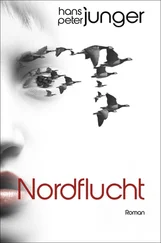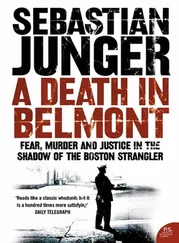Like a bad marriage, the split was only a matter of time. In the late 1960s Archbishop Makarios officially stopped calling for enosis as a political goal, and in July 1974 he accused the Greek military of trying to undermine his power. A cadre of right-wing officers, outraged by what they perceived to be a betrayal of Hellenism, sacked the presidential palace and chased Makarios into hiding. They also killed hundreds of moderate Greek Cypriots suspected of being Communist sympathizers or simply soft on Turks. Within days they had replaced Makarios with an EOKA fighter named Nikos Sampson, who had already proved his patriotism by taking seven hundred Turkish Cypriot civilians hostage during the Green Line clashes ten years earlier. Within forty-eight hours the Nixon administration had dispatched a high-level diplomat named Joseph Sisco to try to keep Turkey out of the war, but it was already too late. “We will not repeat the mistake we made ten years ago,” the Turkish prime minister told Sisco on July 19. The next morning a flotilla of Turkish troop carriers scraped ashore near the north Cyprus town of Kyrenia and disgorged six thousand Turkish troops.
Scott Anderson
THE TURKISH REPUBLIC OF NORTHERN CYPRUS
I will tell you a story about Cyprus. Once there was a snake, and one day this snake came into the house of a man who had a son. The snake bit the man’s son and that son died, so in his grief the man took up a knife and cut off the snake’s tail. The next day the snake came back and said to the man, “Okay, now let’s be friends.” The man said, “We can never be friends, because you killed my son, and that is a pain I will carry in my heart forever, and I cut off your tail, and that is a pain you will carry in your heart forever.” So that is why there can never be peace in Cyprus.
—ELDERLY TURKISH CYPRIOT WOMAN
An old man and a scruffy white dog stand at the edge of an empty swimming pool, both seemingly lost in thought as they stare into its depth. The pool is exceptionally deep—maybe fifteen feet—and lined with cracks, its bottom covered with a thick layer of dead leaves. The man spots me on the opposite side of the gate and beckons me through.
“Very bad design,” the man mutters when I come alongside. “Big problems.”
I ask if he’s thinking of repairing it.
“No, no.” He chuckles. “It has been like this for twenty-five years. It is a museum.” He looks to the three-story house beyond; it is an angular structure, concrete balconies and windows perched above the sea. “All this is a museum. In 1974 it was the home of [President] Makarios’s doctor; now it is for the Peace Operation martyrs.”
In the early-morning hours of July 20, 1974, advance units of the Turkish amphibious force started coming ashore in a small cove about three miles west of this house on the north coast of Cyprus. It marked the beginning of what Turkish Cypriots still call the Peace Operation. A matter of definition, perhaps, because the most immediate results of that operation were the deaths of as many as four thousand soldiers and civilians, the dislocation of over two hundred thousand more, and an international crisis that very nearly led to regional war. I’m not here to quibble, though; the old man starts toward the house, and I follow.
It was a cold overcast day, and I had headed west out of the coastal resort town of Kyrenia to explore the nearby beaches where the Turkish soldiers had first come ashore in 1974. I had stopped at a memorial park on a bluff overlooking the sea, an austere mausoleum with the graves of some seventy Turkish soldiers arrayed before an abstract sculpture of bent black metal. To one side lay another kind of graveyard, some two dozen old tanks and armored personnel carriers parked in neat rows and surrounded by flower beds and trees. Most of the weaponry appeared to be of 1950s vintage, the feeble armor the Greek Cypriots had mustered to oppose the Turkish Army, and the joint ravages of combat and pilferage had transformed them into empty husks. It was while walking amid the tanks that I had glanced over the fence to see the man and his dog by the swimming pool.
At the entranceway to the house, the old man stops and draws my attention to the scars in the flagstone wall. “This is where they killed Karaoglanoglu,” he says, referring to the Turkish ground forces’ commander killed early in the invasion. He points to a nearby clump of trees. “The Greeks were hiding in there, and when Karaoglanoglu peacefully approached this door— tok! —a mortar.” He shakes his head sadly, then pushes open the door and motions me inside.
The far side of the house is a wall of windows, and just beyond is the Mediterranean, all whitecaps and thrashing waves on this stormy day. The bottom floor is taken up with display cases of captured Greek weapons, fragments of shells and grenades. Upstairs are four rooms, each lined with row upon row of black-and-white photographs of young men in formal pose, Turkish soldiers killed in the Peace Operation. Some of the photos appear to be from high school graduations, the teenagers in civilian dress and smiling, whereas others look to be enlargements of military identification cards, the subjects more somber and with shaved heads. Here and there are glass display cases containing the dress uniforms of dead officers and their personal effects: wallet-size photographs of wives or children or girlfriends, letters home written on thin paper, medals.
If not much of a Peace Operation, the first phase of the Turks’ 1974 invasion was also not much of a military triumph. In fact, it was pretty much a fiasco, a detail glossed over by the Turkish government but given unintended confirmation by the neat juxtaposition of the rows of “martyr” photographs in the oceanfront museum with the display of antique enemy weaponry in the adjacent field.
On that first day, all had gone rather smoothly for the Turkish soldiers. Coming ashore at the western end of Five-Mile Beach, the six-thousand-man vanguard had met little resistance and by evening had fanned out along the coastline; in the morning, commanders planned to cross over the Kyrenia Mountains and link up with the paratroop unit that had landed just outside Nicosia—or Lefkosa, as it is known to the Turks. It was with nightfall that things began to go awry.
Incredibly, the naval armada that had delivered the vanguard to the Cyprus coast headed back to Turkey at dusk, and so did the jet fighters that had provided air cover throughout the day. Even more incredibly, there was virtually no communication link between the landing force on the island and military planners on the mainland. Greek Cypriot fighters, complemented by Greek soldiers, seized the moment to attack all along the Turkish line, surrounding the paratroop unit outside Lefkosa and streaming down from caves in the mountains above Five-Mile Beach to fall upon the landing units strung out along the coast. Throughout the night, ferocious battles raged as positions were overrun, retaken, and lost again in a chaos of close combat made worse by raging brushfires.
At dawn the Turkish Air Force finally returned to the skies, and what had been a seesaw battle now turned into a slaughter. Turkish planes bombed military positions across the island, decimated Greek Cypriot armored convoys caught in the open, and cleared their entrenched mountain positions with napalm. By the time a cease-fire was declared the next day, the Turkish Army had carved out a narrow enclave that extended all the way to the Turkish Cypriot neighborhoods of Lefkosa.
But the Peace Operation wasn’t done just yet. Over the next three weeks, as diplomats frantically sought a solution to the crisis, Turkey quietly built up its force on Cyprus to some thirty thousand troops, and they were ready to roll when the peace talks collapsed. In just three days the Turks poured out of their bridgehead to seize more than a third of the island and create the frontier they still hold today.
Читать дальше












